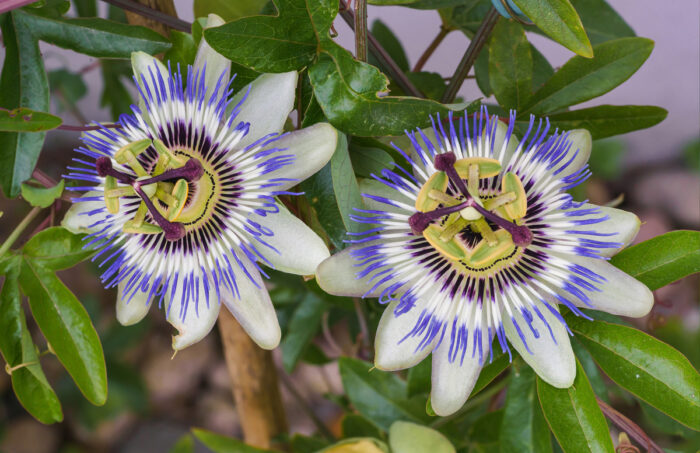
When it comes to perennial vines, it’s hard to top the beauty of blue passion flower (Passiflora caerulea, Zones 7–11). This South American native plant is well-suited for the heat and humidity of the southeastern United States. One of the hardiest passion vines, it will reliably overwinter in Zone 7, or even Zone 6 when provided with extra winter protection. Learn more about choosing the right passion flower vine for your garden here.
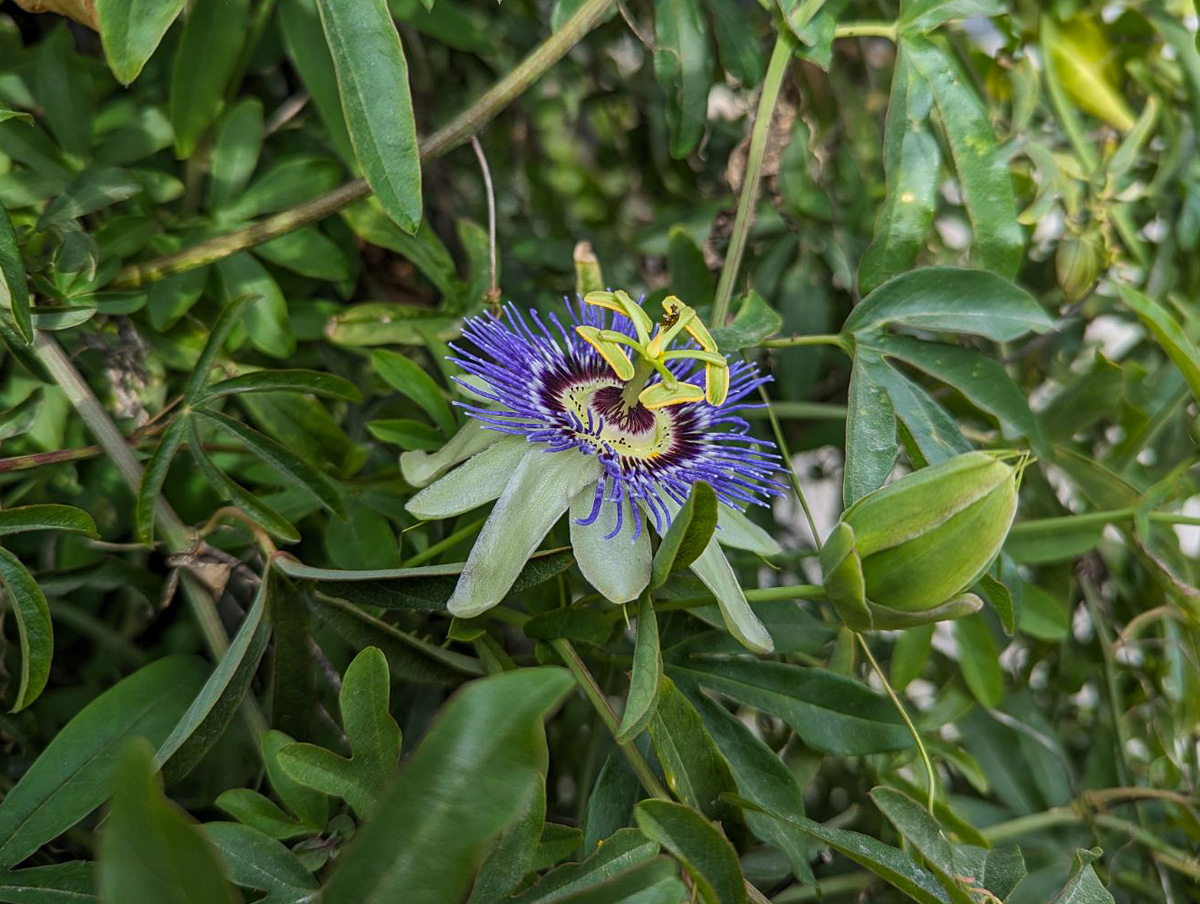
Blue passion flower prefers full sun and a structure to climb on
This dense, vigorous vine can easily grow 20 feet tall and 6 feet wide. Its sensitive, coiling tendrils, like those of pea plants, help it latch onto and climb up structures in search of the sun. The more sun it gets, the more blooms it produces. From early summer to early fall, the vine is laden with multitudes of pale, starburst-shaped flowers topped by vibrant indigo crowns and large, golden anthers. Popular in cultivation, a number of colorful cultivars exist, including ‘Waterloo Blue’.
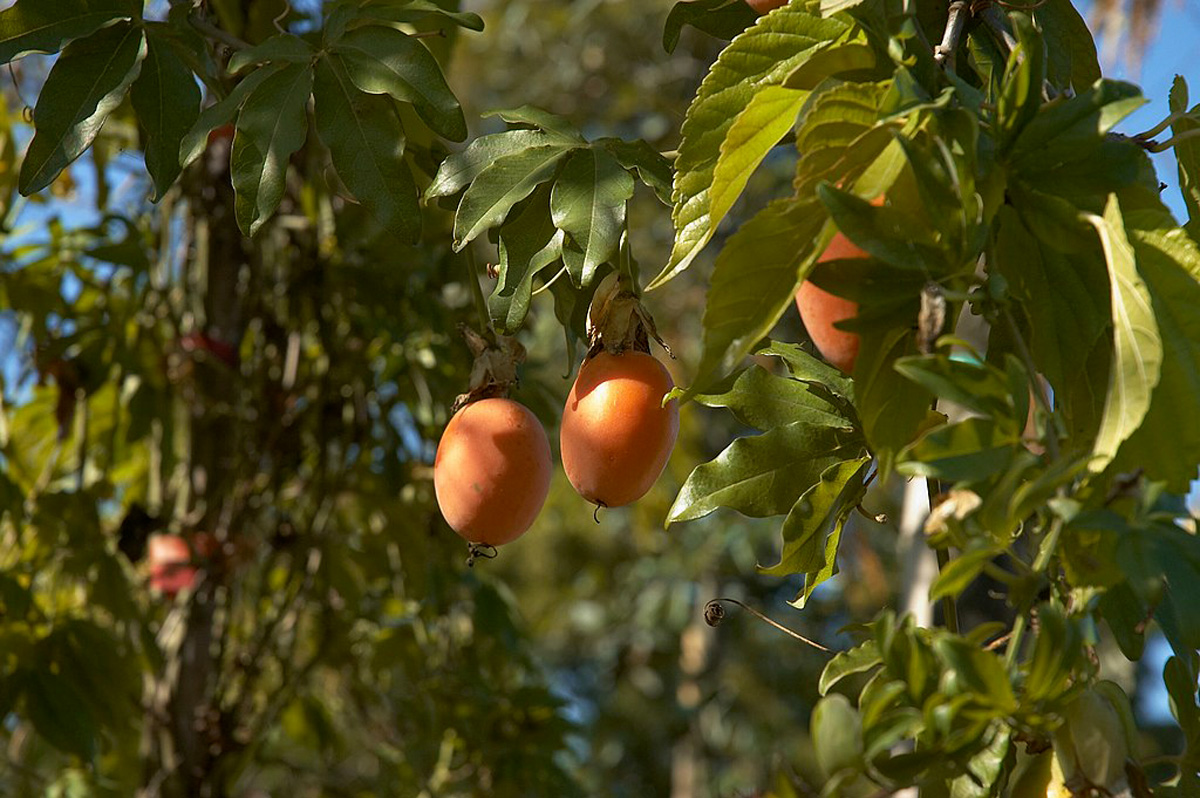
The attractive orange fruit is edible but bland
The fruit of this vine is edible when it ripens to a beautiful orange color, although if you’re only growing it for the fruit, you may be disappointed. Its tart taste is less appetizing than the widely available common passion fruit (Passiflora edulis, Zones 10–12). Plus, there’s often a high seed-to-pulp ratio, which promises more effort than it’s worth. All other parts of the plant, including the unripened fruit, are reported to be toxic.
Be wary of this plant’s suckering roots, or grow it in a container
Blue passion flower will easily thrive in most sunny, well-draining sites when given a sturdy support, but there are a few things to consider before introducing it to your landscape. First, like other kinds of Passiflora, blue passion flower forms a large root system that can sucker many feet from its original planting site. If routine sucker removal sounds like too much maintenance, consider growing it in a large pot instead. Be sure that the soil medium is well-draining and the container is no smaller than 10 gallons (approximately 18 inches in diameter and height). Unless you’re in Zone 8 or above, you will need to move the container into an unheated garage or shed for winter, or insulate the pot to increase the plant’s chances of overwintering.
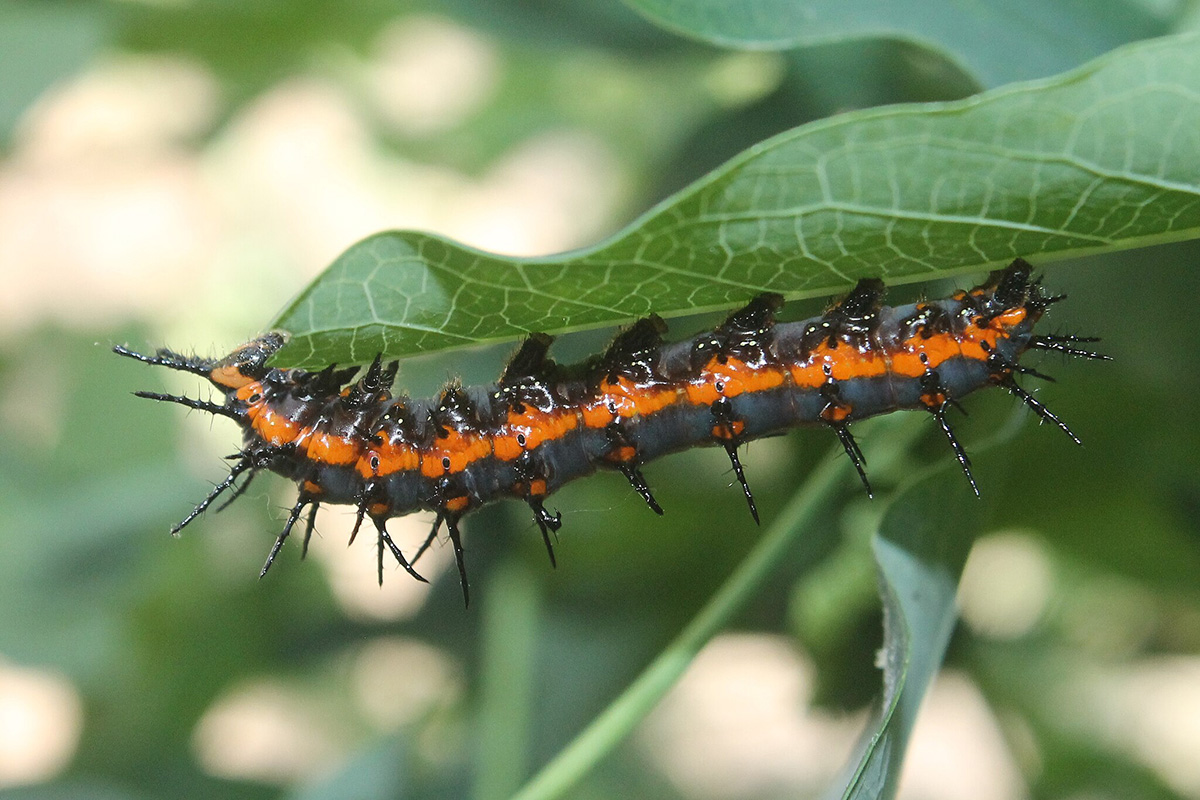
Blue passion flower is a butterfly host plant but can be defoliated by caterpillars
Additionally, blue passion flower is a host plant for many species of fritillary butterflies, most notably the gulf fritillary. We rarely see this butterfly in Virginia, but I’ve heard many stories from Floridians about the caterpillars’ voracious appetites. These spiky caterpillars quickly devour the foliage of even large plants, turning what was once a dense wall of glossy, deep green leaves into a tattered mess. Some gardeners will be thrilled by this, and others will be devastated, so if you’re in the deep Southeast, it’s a good idea to evaluate your stance before planting.

This vine is a vigorous grower that responds well to pruning
Whether it’s hit by insect damage or a pair of pruners, blue passion flower can quickly regenerate by putting on a lot of new growth in just one season. Established plants can safely be pruned to one-half to one-third of their size without inflicting too much stress, allowing you to control their height. It’s best to do this in spring before the buds start to form; otherwise, you might sacrifice flowers. Even with regular pruning, blue passion flower will never look as manicured as clematis (Clematis spp. and cvs., Zones 4–9) and some other vines, but its untamed spirit is part of its charm.
Consider giving this bold, attractive vine a try in your garden. For other vines with a similar look, try purple passion flower (Passiflora incaranta, Zones 5–9) or yellow passion flower (Passiflora lutea, Zones 5–10), both of which are native.
To chat about this or other great plants for the Southeast, talk to a regional expert on the Gardening Answers forum.
And for more Southeast regional reports, click here.
Cheyenne Wine is a writer and photographer for Rare Roots Nursery in Mechanicsville, Virginia.
Photos, in order of appearance:
1 Franz van Duns, CC BY-SA 4.0, via Wikimedia Commons
2 and 5 Cheyenne Wine
3 Wouter Hagens, CC BY-SA 3.0, via Wikimedia Commons
4 Edward Rooks, CC BY-SA 4.0, via Wikimedia Commons




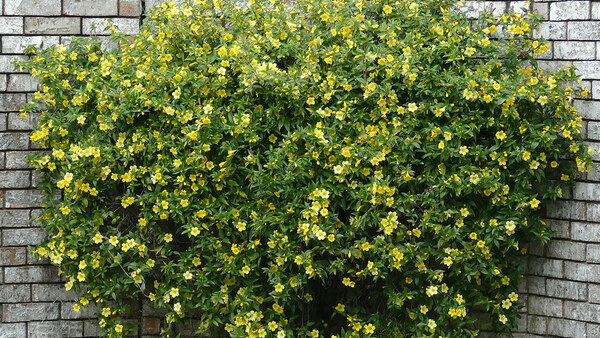

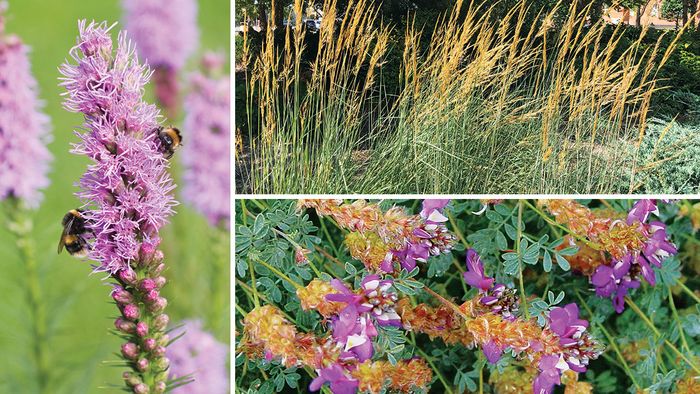

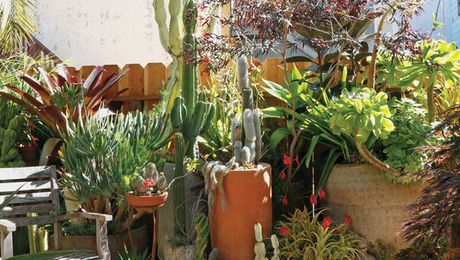









Comments
Log in or create an account to post a comment.
Sign up Log in